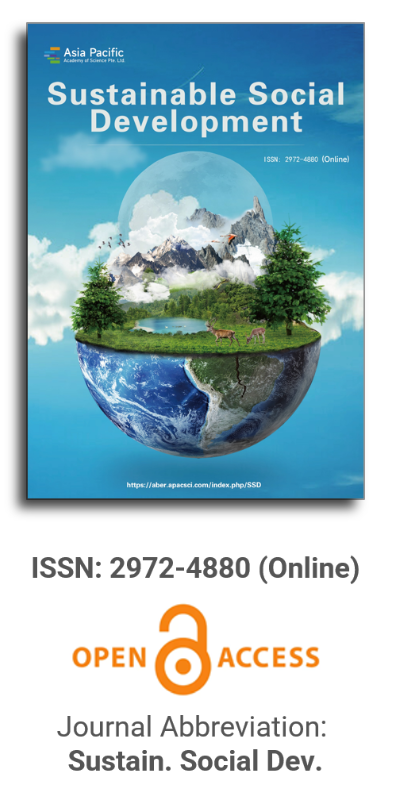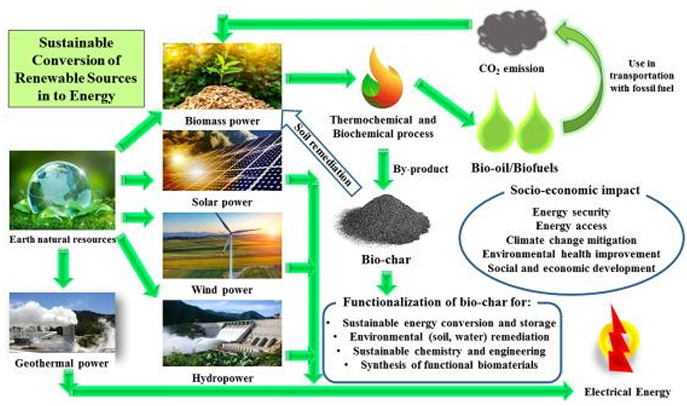
Asia Pacific Academy of Science Pte. Ltd. (APACSCI) specializes in international journal publishing. APACSCI adopts the open access publishing model and provides an important communication bridge for academic groups whose interest fields include engineering, technology, medicine, computer, mathematics, agriculture and forestry, and environment.

Difference-in-difference analysis: The EU integration’s effect on quality of life through selected economic security indicators from 2005–2022
Vol 3, Issue 2, 2025
Download PDF
Abstract
Quality of life indicators are significant tools to evaluate the individual’s well-being. In this sense, economic security measurement is a part of well-being. In achieving a greater level of well-being, countries can get many benefits by joining economic integrations. However, these benefits may not only sometimes be as great as thought. We investigate the changes in (in)security measurements for the new members with the difference-in-difference method. This method is beneficial for analyzing the effects before and after treatment, policy, and implications for different units. Our study aims to detect if there are significant changes or improvements in the security levels of new members of the European Union from 2005 to 2022. The findings figure out that the level of arrears was essentially reduced for most members. Still, the integration has no visible impact on purchasing power parity for the period. These are critical findings showing a trend not sourced from integration and, at the same time, the inefficiency of policy and implementation of the EU.
Keywords
References
- Eurostat. Quality of life indicators-measuring quality of life. Available online: https://ec.europa.eu/eurostat/statistics-explained/index.php?title=Quality_of_life_indicators_-_measuring_quality_of_life#The_8.2B1_dimensions_of_quality_of_life (accessed on 25 February 2025).
- Osberg L, Sharpe A. Measuring economic security in insecure times: New perspectives, new events and the index of economic well-being. Centre for the Study of Living Standards; 2009
- Osberg, L, Sharpe, A. An index of economic well-being for Canada. Applied Research Branch, Strategic Policy, Human Resources Development Canada; 1998
- Osberg L, Sharpe A. An index of economic well-being for selected OECD countries. Review of Income and Wealth. 2002; 48(3): 291–316.
- Tang SM. Rethinking economic security in a globalized world. Contemporary Politics. 2015; 21(1): 40–52.
- Hacker JS. Economic security. For Good Measure: Advancing Research on Well-being Metrics Beyond GDP. OECD Publishing; 2018.
- Richiardi MG, He Z. Measuring economic insecurity: A review of the literature. Centre for Economic Policy and Analysis; 2020.
- Berton F, Richiardi M, Sacchi S. The political economy of work security and flexibility: Italy in comparative perspective. Bristol University Press; 2012.
- Western B, Bloome D, Sosnaud B, Tach L. Economic insecurity and social stratification. Annual Review of Sociology. 2012; 38: 341–359.
- Eurostat. Inability to face unexpected financial expenses-EU-SILC survey. Available online: https://ec.europa.eu/eurostat/databrowser/view/ILC_MDES04__custom_12132757/defa ult/table?lang=en (accessed on 11 July 2024).
- Eurostat. Purchasing power parities (PPPs), price level indices and real expenditures for ESA 2010 aggregates. Available online: https://ec.europa.eu/eurostat/databrowser/view/prc_ppp_ind __custom_12132747/default/table?lang=en (accessed on 16 July 2024).
- Hair Jr JF, Hult GTM, Ringle CM, et al. Partial least squares structural equation modeling (PLS-SEM) using R: A workbook. Springer Nature; 2021. p. 197.
- Bağlıtaş HH, Atik H. Economic Security and Physical Safety in the European Union: A Multivariate Statistical Analysis. Nicel Bilimler Dergisi. Journal of Quantitative Sciences. 2023; 5(1): 64–89.
- Carton FL, Xiong H, McCarthy JB. Drivers of financial well-being in socio-economic deprived populations. Journal of Behavioral and Experimental Finance. 2022; 34: 100628.
- Cantó O, Garcia-Perez C, Romaguera-De-la-Cruz M. Multidimensional measures of economic insecurity in Spain: The role of aggregation and weighting methods. Hacienda Publica Espanola. 2021; 238: 29–60.
- Banks M, Bowman D. Bad timing: the temporal dimensions of economic insecurity. Critical Sociology. 2020; 46(4–5): 511–525.
- Cantó O, García-Pérez C, Romaguera-de-la-Cruz M. The dimension, nature and distribution of economic insecurity in European countries: A multidimensional approach. Economic Systems. 2020; 44(3): 100807.
- Khadzhynova O, Simanaviciene Z, Mints O, et al. Assessment of the EU Countries’ Economic Security based on the Composite Indicators. WSEAS Transactions on Business and Economics. 2022; 19: 690–700.
- Gryshova I, Kyzym M, Hubarieva I, et al. Assessment of the EU and Ukraine economic security and its influence on their sustainable economic development. Sustainability. 2020; 12(18): 7692.
- Romaguera‐de‐la‐Cruz M. Measuring economic insecurity using a counting approach. An application to three EU countries. Review of Income and Wealth. 2020; 66(3): 558–583.
- Bossert W, Clark AE, d’Ambrosio C, Lepinteur A. Economic insecurity and the rise of the right. Centre for Economic Performance; 2019.
- Ignatov A. Analysis of the dynamics of the European economic security in the conditions of a changing socio-economic environment. New Medit, Mediterranean Journal of Economics, Agriculture, Environment and Food. 2019; 18(2).
- Korovchenko T, Kraftová I. Economic and personal security as part of quality of life of EU member states. Masarykova univerzita. Available online: https://is.muni.cz/do/econ/soubory/katedry/kres/4884317/proceedings2018-articles/2018-047.pdf (accessed on 2 January 2025).
- D’Ambrosio C, Rohde N. The Distribution of Economic Insecurity: Italy and the US over the Great Recession. Review of Income and Wealth. 2014; 60: S33–S52.
- Hacker JS, Huber GA, Nichols A, et al. The economic security index: A new measure for research and policy analysis. Review of Income and Wealth. 2014; 60: S5–S32.
- Osberg L, Sharpe A. Measuring economic insecurity in rich and poor nations. Review of Income and Wealth. 2014; 60: S53–S76.
- Berloffa G, Modena F. Economic well-being in Italy: The role of income insecurity and intergenerational inequality. Journal of Economic Behavior & Organization. 2012; 81(3): 751–765.
- Goul Andersen J. Coping with long–term unemployment: economic security, labour market integration and well-being. Results from a Danish panel study, 1994–1999. International Journal of Social Welfare. 2002; 11(3): 178–190.
- Mutchler JE, Shih YC, Lyu J, et al. The elder economic security standard indexTM: A new indicator for evaluating economic security in later life. Social Indicators Research. 2015; 120: 97–116.
- Rohde N, Tang KK, Rao DP. Distributional Characteristics of Income Insecurity in the US, G ermany, and B ritain. Review of Income and Wealth. 2014; 60: S159–S176.
- Bossert W, D'ambrosio C. Measuring economic insecurity. International Economic Review. 2013; 54(3): 1017–1030.
- Khandker SR, Koolwal GB, Samad HA. Handbook on impact evaluation: Khandker quantitative methods and practices. World Bank Publications; 2009.
- Mora R, Reggio I. didq: A command for treatment-effect estimation under alternative assumptions. The Stata Journal. 2015; 15(3): 796–808.
- Zhou H, Taber C, Arcona S, Li Y. Difference-in-differences method in comparative effectiveness research: Utility with unbalanced groups. Applied Health Economics and Health Policy. 2016; 14: 419–429.
- Albouy D. Program evaluation and the difference in difference estimator. Economics. 2004; 131: 1–4.
- Fredriksson A, Oliveira GMD. Impact evaluation using Difference-in-Differences. RAUSP Management Journal. 2019; 54: 519–532.
- Alagöz N. Uncovering the Limitations of Traditional DiD Method. Available online: https://towardsdatascience.com/uncovering-the-limitations-of-traditional-did-method-2f068f56d19a/ (accessed on 2 January 2025).
- Meyer BD. Natural and quasi-experiments in economics. Journal of Business & Economic Statistics. 1995; 13(2): 151–161.
- Bertrand M, Duflo E, Mullainathan S. How much should we trust differences-in-differences estimates? The Quarterly Journal of Economics. 2004; 119(1): 249–275.
- Fougère D, Jacquemet N. Difference-in-differences method. Policy Evaluation: Methods and Approaches. 2021
- European Union. Key European Union achievements and tangible benefits. Available online: https://european-union.europa.eu/priorities-and-actions/eu-priorities/achievements_en (accessed on 2 January 2025).
Supporting Agencies
Copyright (c) 2025 Author(s)
License URL: https://creativecommons.org/licenses/by/4.0/

This site is licensed under a Creative Commons Attribution 4.0 International License (CC BY 4.0).

Prof. Kittisak Jermsittiparsert
University of City Island, Cyprus






It is with deep regret that we announce the cancellation of the Forum on Sustainable Social Development & Computing and Artificial Intelligence, originally scheduled for June 15, 2025.

